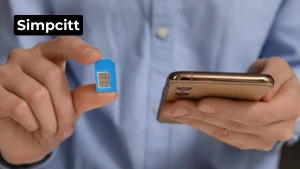Security containers, commonly known as safes, are an essential component in maintaining the integrity of your valuables, whether they hold confidential documents, precious jewels, or critical data. Navigating the world of security container operations can initially feel like unraveling a complex puzzle, but fear not! This comprehensive guide crafted by experts in the field will teach you “When Opening and Closing a Security Container?”.
The Steps for When Opening and Closing a Security Container?
Opening a security container may seem daunting at first, but following the right steps will make it an uncomplicated routine.
![When Opening and Closing a Security Container? [A Detailed Guide] 2 The Steps for When Opening and Closing a Security Container?](https://simspack.com/wp-content/uploads/2023/07/The-Steps-for-When-Opening-and-Closing-a-Security-Container.jpg)
Access Control for Safes
A safe is nothing without its lock. To operate any security container, understanding lock mechanics is paramount. Several types of locks, including key locks, combination locks, electronic locks, and biometric locks, are commonly used in security containers. Each type necessitates a different approach to opening, so let’s get to grips with the basics of safe locks.
Unlocking a Key Lock Safe
A key lock is the oldest and simplest form of safe lock. To open a key lock safe, all you need is the correct key. Insert the key into the lock, turn it as far as it will go, and voila! Your security container is open.
Deciphering a Combination Lock
Combination locks are slightly more complex, requiring a specific sequence of numbers to unlock. Remember to rotate the dial at least three times to the left (counter-clockwise) to clear the lock before starting. Then, turn the dial right to the first number, left to the second, and right again to the last. Press down the handle, and your safe should open smoothly.
Mastering an Electronic Lock
Modern safes often feature electronic locks, which offer a balance between ease of use and security. Just enter the correct numerical code on the keypad, press ‘Enter,’ and your safe should unlock. Always remember to regularly change your code to enhance security.
Navigating a Biometric Lock
Biometric locks are the height of security tech in the 21st century. They require a unique physical attribute, like a fingerprint, to unlock. Simply place your finger on the scanner, wait for the device to recognize your fingerprint, and access your safe.
How to Securely Close Your Safe
![When Opening and Closing a Security Container? [A Detailed Guide] 3 How to Securely Close Your Safe](https://simspack.com/wp-content/uploads/2023/07/How-to-Securely-Close-Your-Safe.jpg)
Once you have retrieved what you need from your safe, you must ensure it is closed securely. Remember, a security container left open is not secure at all.
Locking Mechanisms for Secure Storage
Regardless of the lock type, relocking your security container is just as important as unlocking it. For a key lock, make sure to remove the key only after the container is locked again. For combination and electronic locks, always scramble the numbers or reset the lock after closing the door. Biometric locks usually lock automatically once the door is shut.
Safe Operation Guidelines: Best Practices
Now that we have walked you through the steps to open and close a security container let’s delve into some best practices and safety measures.
Maintain Regular Lock Changes
Especially for electronic locks, it is crucial to change your combination frequently. This habit minimizes the risk of your code falling into the wrong hands.
Check for Proper Functioning
Before storing any valuables, ensure that your security container is functioning correctly. Try opening and closing it several times to verify its operation.
Seek Professional Assistance
If you ever forget the combination to your safe or experience difficulties with the locking mechanism, don’t hesitate to reach out to a professional. Amateur lock-picking attempts can lead to damage and compromised security.
Advanced Container Security: Special Features and Innovations
![When Opening and Closing a Security Container? [A Detailed Guide] 4 Advanced Container Security Special Features and Innovations](https://simspack.com/wp-content/uploads/2023/07/Advanced-Container-Security-Special-Features-and-Innovations.jpg)
After exploring the basic procedures for opening and closing security containers, let’s delve deeper into the more advanced aspects of secure container operations, including special features, latest innovations, and more complex mechanisms in the world of safes.
Extra Layers of Security
![When Opening and Closing a Security Container? [A Detailed Guide] 5 Extra Layers of Security](https://simspack.com/wp-content/uploads/2023/07/Extra-Layers-of-Security.jpg)
Beyond the basic locking mechanisms, modern security containers often come equipped with additional security features to further enhance their robustness.
Time Locks
Time locks add an extra dimension of security by setting a predetermined time interval when the safe can be opened, even with the correct key or combination. This feature significantly reduces the risk of unauthorized access outside of the set time window.
Re-lockers
A re-locker is a mechanism that automatically secures the safe if tampering is detected. For instance, if someone attempts to break into the safe forcefully, the re-locker triggers, locking the safe even more securely, often requiring professional intervention to reopen.
Technological Innovations
Technology is revolutionizing security container designs, making safes more secure, user-friendly, and convenient.
Smart Safes
Smart safes are an innovative step towards the future of secure storage. They can be controlled remotely using a smartphone application, allowing for real-time monitoring. They may also include alert systems, notifying the owner or the security company if there are any break-in attempts.
Multi-Factor Authentication
Taking a cue from digital security protocols, some high-end safes now require multi-factor authentication. This feature requires two or more independent credentials for the safe to open, such as a fingerprint and a numerical code, making unauthorized access even more challenging.
Dealing with More Complex Situations
There are instances where opening and closing a security container can become more complex, such as forgetting the combination, losing the key, or dealing with a malfunctioning lock. In these cases, professional help is often required.
Locksmith Intervention
A professional locksmith has the necessary tools and expertise to open a security container without causing damage. This could involve lock manipulation, cutting, or even drilling in some cases. Therefore, it is recommended to keep the contact details of a reliable locksmith on hand.
Periodic Maintenance
Like any mechanical device, security containers require regular maintenance to function optimally. This includes checking and oiling the moving parts, checking the battery (for electronic and biometric locks), and having the lock and the bolt work inspected by a professional every few years.
Frequently Asked Questions About When Opening and Closing a Security Container?
How long does it take to open a high-security container?
Opening a high-security container should not take more than a few minutes. However, remember that patience and precision are more important than speed.
Are there any alternative methods for opening a locked security container?
In case you lose the key or forget the combination, professional locksmiths can help. They use a variety of safe-cracking methods, such as drilling or manipulation, to open your container without damaging its contents.
How often should the locks on a security container be changed?
For electronic locks, it is advisable to change your code every three to six months. For other types of locks, consider changing them if your key is lost or stolen, or if someone else knows the combination.
What should I do if my security container’s electronic lock runs out of battery?
Most electronic locks will give a low-battery warning before running out of power. However, if the battery does die, most safes have an external battery connector or a key override feature. Consult the user manual or contact a professional locksmith if unsure.
Are there fireproof or waterproof security containers?
Yes, many security containers on the market are rated for fire resistance and water resistance, offering an extra layer of protection for your valuables. It’s important to note that the level of resistance can vary, so choose a safe that fits your specific needs.
Also Read: Which of These Actions is a Homeland Security Violation?
Conclusion
In conclusion, the process of opening and closing a security container, while initially intimidating, can be mastered with knowledge and practice. Remember, the safety of your valuables depends on the proper operation of your security container, so handle it with care. Follow these expert tips about “When Opening and Closing a Security Container?”, and you will soon become a pro at secure container operations. Your valuables are waiting for their safe haven!
![When Opening and Closing a Security Container? [A Detailed Guide] 6 Meghan Wiltshire](https://simspack.com/wp-content/uploads/2023/06/Meghan-Wiltshire.jpg)
Meghan Wiltshire, the captivating blogger and wordsmith extraordinaire. With her pen as her wand, she weaves enchanting tales and imparts wisdom through her engaging writing. Join her on a literary journey that will leave you spellbound and craving for more.

![When Opening and Closing a Security Container? [A Detailed Guide] 1 When Opening and Closing a Security Container](https://simspack.com/wp-content/uploads/2023/07/When-Opening-and-Closing-a-Security-Container--1024x576.png)


